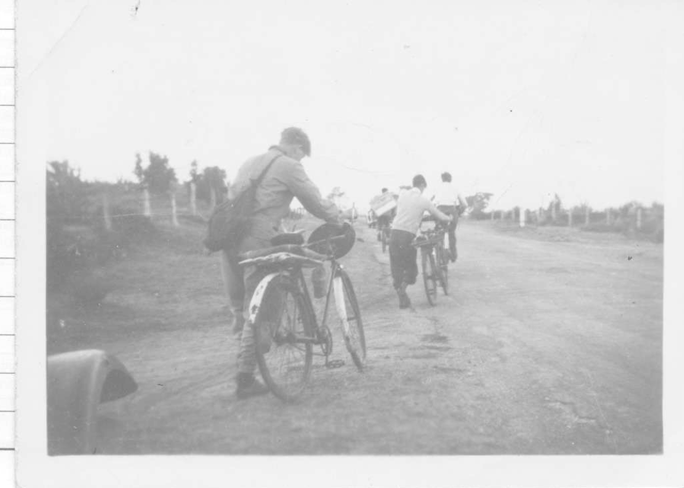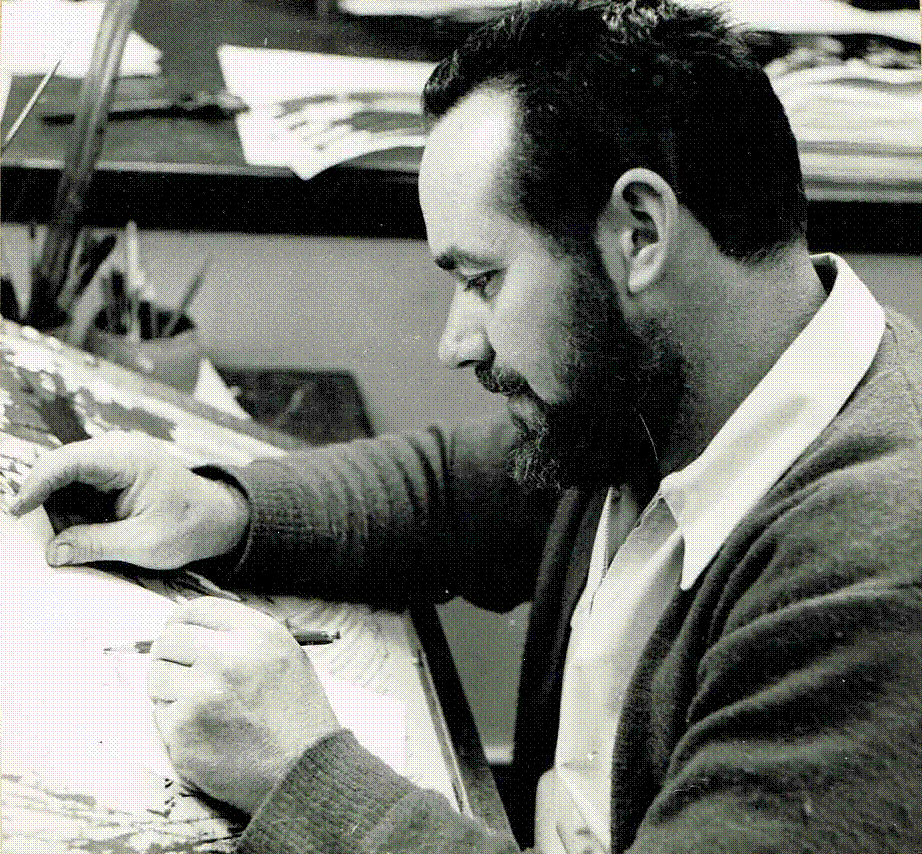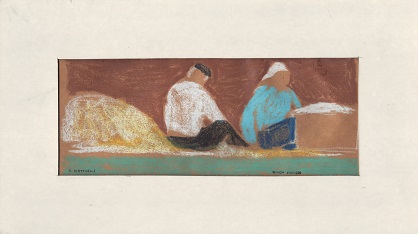Matthews, George
BIOGRAPHY of GEORGE MATTHEWS (1924 - 2019)
George Matthews was born in 1924 in Kent Town, Adelaide, the second youngest of five children born to Bertram (a piano demonstrator for Cawthorne's Music Shop) and Emily Matthews (home-duties and later, a house cleaner). He attended schools in Payneham, Sturt Street and Westbourne Park, leaving school at the age of thirteen. As a teenager, he worked firstly as a butcher's delivery boy, then as a storeman for Stally-Frith, a business in Kent Town where small work baskets and attaché cases were made. At the age of sixteen he worked at Millar Engineering foundry in Kilkenny on 12 hour night shifts, then as a builder's labourer constructing the Salisbury Munitions Factory. In the meantime, he was waiting for call-up as a volunteer in the Australian Navy.
At seventeen, he joined the Australian Navy as a Seaman, firstly on a Mine Sweeper in the St. Vincent Gulf and later on corvettes escorting troop-ships along the northern coast of Australia to the threatened Japanese invasion zone in New Guinea. On the corvettes, he trained as an anti-aircraft gunner as well as assisting in the mapping of the Southern coast of New Guinea. During his time in the Navy, he completed three years of a Correspondence School course in Art. When onshore in Sydney, he bought the necessary art supplies from Penfold Art Supplies and took the opportunity to sketch whenever he had time ashore.
Once demobilised from the navy in 1943, George worked for Perry Engineering at Mile End, as a saw-man and lathe-worker making pipes. He took a psychological employment test which gained him admittance to a training course at the Adelaide School of Art. This was situated in the School of Mines Building on North Terrace, opposite the old Royal Adelaide Hospital. (The test results showed him to be Superior for design, above average for Engineering and Average for clerical.) He spent one and a half years studying art there, but did not graduate the two year course as he gained employment at the SA Museum on North Terrace. Here, he was employed in setting up the large scenes or dioramas to display various artefacts, which were a feature of the museum at that time.
George married his fiancée Lois ( née Drechsler of Payneham) in 1947 and their first two children Christopher and Jennifer were born in 1948 and 1950.
During this time, George made good friends with a small group of Adelaide amateur artists including Geoff Brown, John Corral, Gordon Harrell and Peter Krastev. George drew and painted with this group of friends throughout the nineteen fifties. On Saturday afternoons each week between 1952 and 1955, they made excursions by bicycle to the area between Montacute and Gorge roads to draw and paint the labourers working in the market gardens there. These hard-working labourers worked throughout the seasons planting, weeding and packing their harvests of carrots, onions, beans and spinach, using horses and ploughs, scythes and bare hands.

After working for a year in the museum job, George gained new employment at A.V.E.C, (or Audio, Visual Education Centre) a department within the Education Department of South Australia. The A.V.E.C. offices were housed in Twin Street facing Hindmarsh Square, above the then Hairdressing Trade School. Here George designed educational teaching aids, including illustrations and hand lettering. This was before television and computers came into use, so posters, flash cards and film-strips for projection were prepared for many and various school courses by a team of teachers, artists and photographers employed at A.V.E.C.

In 1951, George took twelve months’ leave from his job at A.V.E.C. and with his wife and two children travelled by ship to England, stopping in Tandi in Ceylon and Cairo in Egypt en route. In London, George gained employment as a warden at the Wallace Collection, earning a wage of 17/6d per week. Supporting a young family, times were tough on the meagre salary he earned. However, his time at the Wallace Collection gave him the opportunity to further study the works of the Great Masters. Towards the end of their overseas stay, George also took the chance to travel in France and Belgium with his small family, visiting the Louvre and other art galleries. At this time the exchange rate was 400 francs to the British pound.
Returning to Adelaide again by sea voyage, and to his job as a commercial artist with A.V.E.C. George and Lois completed their family with the birth of a third child, named Allina. During this period (1955 -1962), George also participated in Life drawing sessions on Wednesday nights organised by the group, as well as sketching animals by himself at the Adelaide zoo during his lunch-hours and on Saturday afternoons with his friends.
Around this time, George rented a room in Rundle Street between Pulteney and King William Street to display his drawings for family and friends. Since he was well-employed, he chose not to sell his works at this time. The cardboard frames he used to mask and mount his work were in place of the framing which he could not afford to buy. They served the purpose of framing the work and separating it visually from the surrounding wall.

George worked mostly in pencil and craypas (a square formed wax-crayon between a chalk and an oil pastel). Working with the materials he could afford at the time, George made up pads of brown paper which he placed on clip-boards to take on drawing trips. During the 1950’s, he also enjoyed making small sculptures and constructed a potter’s wheel and a kiln to throw and fire clay pots. At this time the family lived in Arthur Street, Payneham, later moving to Cherryville, Athelstone and St Morris.
This article has been written by Jenny Matthews, daughter of George Matthews, to coincide with an exhibition of George's work in the Campbelltown Library in February 2017.
For further information please contact the Local History Officer, Helen Thiselton hthiselton@campbelltown.sa.gov.au or 8366 9357
